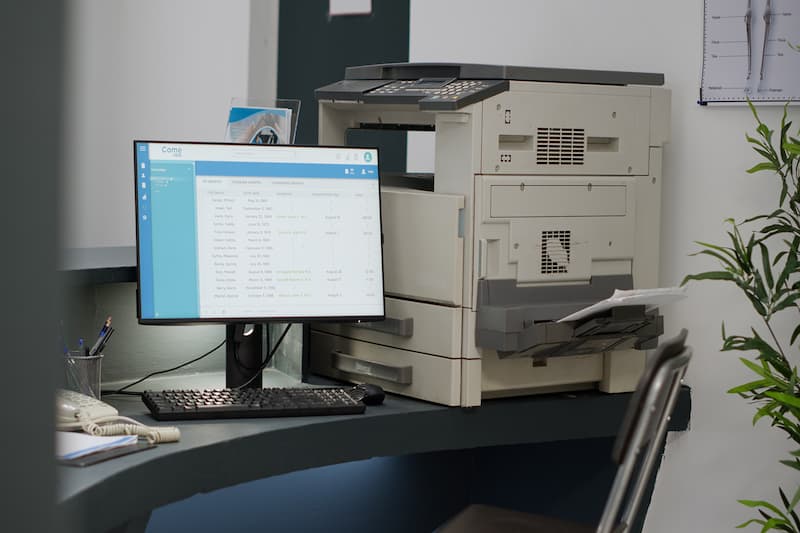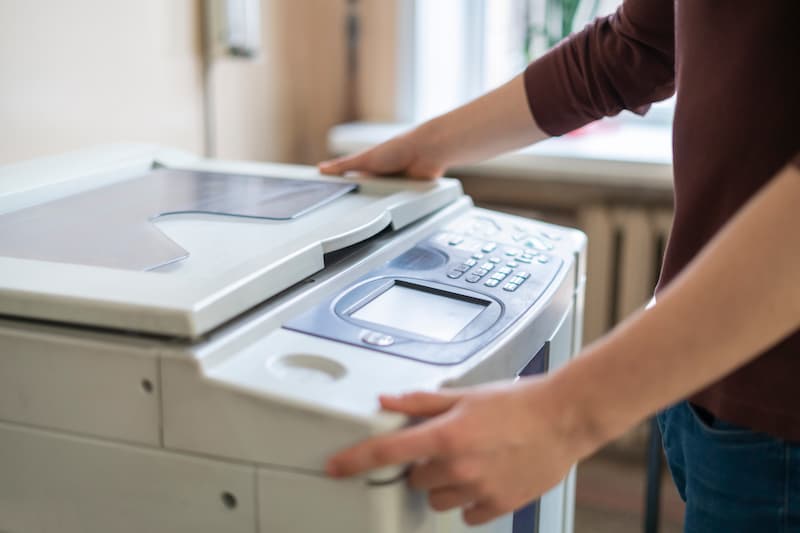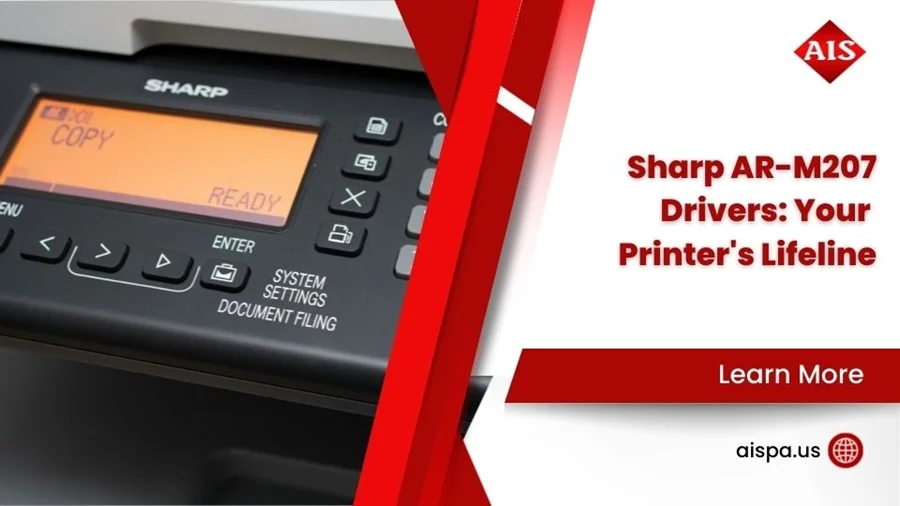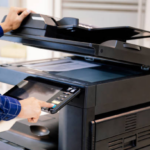How to Set a Default Printer in Windows 11: Easy Guide to Configure Your Printer

October 14, 2024
 0 views
0 views
 0 comments
0 comments
How to Set a Default Printer in Windows 11
Setting a default printer in Windows 11 is essential for ensuring a smooth and efficient printing experience. Whether you’re in a home office, a large business setting, or using a shared PC, assigning a default printer makes your workflow more manageable. Windows 11 offers several methods to set and change your default printer, making it easy to choose and manage your preferred device. This guide will take you through various ways to set a default printer, troubleshoot common issues, and explore advanced printer management techniques for Windows 11.
What is a Default Printer?
Overview and Purpose
A default printer is the primary device your system uses whenever you choose to print a document, image, or webpage. If you have multiple printers connected to your Windows 11 PC, setting a default printer ensures that Windows automatically sends your print jobs to this primary device unless specified otherwise. It minimizes the need to select a printer each time you print, saving you time and reducing errors. Understanding how to set and manage a default printer is crucial for users in multi-printer environments, such as offices or shared workspaces.
Importance of Assigning a Default Printer
Assigning a default printer simplifies operations in an office setting where multiple printers are used. It avoids confusion, ensures that your jobs are routed correctly, and reduces the likelihood of sending print commands to unintended devices. When combined with Windows 11’s advanced printer settings, assigning a default printer can enhance your productivity by providing seamless document management, especially when dealing with high-volume print tasks or specialized printers like laserjets or multifunction devices.
How Windows 11 Manages Default Printers
Let Windows Manage My Default Printer

Windows 11 offers a feature called “Let Windows Manage My Default Printer.” When enabled, Windows automatically sets the printer you’ve used most recently as your default printer. This is helpful in environments where users frequently switch between different printers, such as a home office and a shared networked printer. However, this feature may not be ideal for users who prefer to stick to a specific printer. Disabling this option allows you to have more control over which printer is set as the default, preventing Windows from making automatic changes that could disrupt your workflow.
When and Why to Disable Automatic Management
Disabling the “Let Windows Manage My Default Printer” feature is recommended for users who work with a single preferred device or have specific printing needs that require consistent output from one particular printer. For example, graphic designers may want to use a high-resolution color printer exclusively, while other users may need a monochrome laser printer for document printing. Knowing when to turn off this feature ensures that your settings remain stable and that Windows doesn’t interfere with your chosen preferences.
Common Issues When Setting a Default Printer in Windows 11
Typical Problems Users Face
Several issues can arise when setting a default printer in Windows 11. Some users report that their selected printer doesn’t show up in the list, while others face problems where the printer appears but cannot be set as the default due to permission or configuration issues. These issues are often related to outdated drivers, missing permissions, or conflicts within the Windows print management system. Understanding these problems and their potential fixes is essential for maintaining a smooth printing experience.
Error Codes and Troubleshooting
Windows 11 may display error codes like 0x00000709 when attempting to set a default printer. This error typically indicates a registry conflict or improper permissions. Fixing these issues usually involves using tools like Command Prompt or modifying the printer settings through the Control Panel. Advanced users may need to delve into the system’s print spooler settings to resolve deeper conflicts, ensuring that the printer’s configuration matches Windows’ default printer requirements.
How to Manually Set a Default Printer in Windows 11
Using the Windows Settings App
To manually set a default printer using the Windows 11 settings app, open the Start menu, select “Settings,” and then go to “Devices.” Click on “Printers & Scanners,” and a list of all connected printers will appear. Select the printer you want to set as the default and click on “Set as Default.” This method is straightforward and ideal for users unfamiliar with complex configurations.
Using Control Panel in Windows 11
If the Settings app doesn’t work as expected, use the traditional Control Panel to set your default printer. Search for “Control Panel” in the Start menu, and select “Devices and Printers.” Right-click on the printer you want to set as default and select “Set as Default Printer.” This option is reliable and gives users a more detailed overview of their printer settings, making it a preferred method for advanced users or when troubleshooting.
Using Printer Software Apps to Set a Default Printer
Some printers, especially those from major brands like HP, Dell, and Canon, come with dedicated printer management apps that include options to set the default printer. These apps often provide more control over printer preferences and settings than the built-in Windows tools. If your printer includes such software, open the app, navigate to the device settings, and choose the option to set it as the default. This is especially useful for users who want brand-specific configurations or access to advanced printer features.
Set Default Printer Using Command Prompt
Step-by-Step Command Prompt Method

Using the Command Prompt to set a default printer involves entering specific command lines. First, open Command Prompt as an administrator, then type rundll32 printui.dll,PrintUIEntry /y /n "PrinterName" and press Enter. Replace “PrinterName” with the exact name of your printer as shown in the printer settings. This method is effective for IT professionals or when managing printers remotely, as it bypasses typical GUI limitations and provides direct control over printer settings.
Using Command Prompt for Troubleshooting Printer Settings
If you encounter issues with changing or setting a default printer, using Command Prompt can also help troubleshoot the problem. Commands like net stop spooler and net start spooler can reset the print spooler, resolving common errors that prevent printer changes. Additionally, you can use Command Prompt to view a list of installed printers using wmic printer get name and then choose the printer name to set as default using the rundll32 command mentioned above.
Setting Up Default Printer for Multiple Users or Accounts
Managing Printers Across User Profiles
For shared PCs or those with multiple user accounts, setting up a default printer for each profile is crucial to avoid confusion. This can be done by logging into each account and manually selecting a default printer through the Settings app or Control Panel. Alternatively, administrators can use Group Policy settings to automate printer assignments across multiple profiles, ensuring consistent settings for all users.
Using Group Policy Editor to Set Printers for Multiple Users
The Group Policy Editor is a powerful tool for managing printers across different users on a network. To access it, type “gpedit.msc” into the Start menu and press Enter. Navigate to “User Configuration” > “Administrative Templates” > “Control Panel” > “Printers.” From there, configure the default printer settings for each user or group, ensuring that every user on the system has the appropriate default printer configured.
Setting Up a Default Printer on a Windows 11 Virtual Machine

Configuring Printers in a Virtual Environment
Virtual machines (VMs) often have different printer settings compared to physical machines. To configure a default printer in a Windows 11 virtual machine, first ensure that the virtual environment supports printer redirection. Open the VM’s settings, go to “Devices,” and enable the printer redirection feature. Then, follow the same steps as a physical machine to set a default printer using the Settings app or Control Panel. This setup allows for seamless printing even within isolated virtual environments.
Using Virtual Machine Settings to Customize Printer Options
In addition to setting a default printer, you can use VM settings to customize printer options, such as enabling shared printer access or configuring printer passthrough from the host machine. These options ensure that your virtual machine has the same printing capabilities as a physical PC, making it ideal for testing or remote work environments.
Choosing the Right Printer for Your Needs
Printer Types and Compatibility
Choosing the right printer depends on your specific needs. Inkjet printers are ideal for color printing, while laser printers are better suited for high-volume monochrome printing. Multifunction printers (MFPs) offer scanning, copying, and faxing capabilities, making them perfect for offices. Understanding the compatibility between your selected printer and Windows 11 is crucial to avoid driver issues or limited functionality.
Brand Considerations: HP, Dell, Canon, and More
Each printer brand offers unique features that can influence your decision. HP is known for its reliable inkjet and laser printers, while Canon provides excellent photo printing quality. Dell focuses on business printers with robust network capabilities. Selecting the right brand depends on your usage, budget, and specific requirements for print quality and performance.
Configuring Advanced Printer Options for Better Performance
Many modern printers include advanced settings for optimizing performance, such as duplex printing, paper type selection, and print resolution adjustments. Configuring these options through the printer’s software or the Windows 11 settings menu ensures that your printer operates at its best, delivering high-quality prints that meet your expectations.
Managing Multiple Printers on Windows 11
Use the “Manage Printers” Feature in Windows
The “Manage Printers” feature in Windows 11 allows users to switch between multiple printers and set new default devices with ease. This feature is useful for users who frequently switch between home and office printers. By selecting “Manage Printers” in the Settings menu, you can view all available printers, select a new default, and adjust settings for each device as needed.
Using Printer Groups for Organized Printer Management
For users with a large number of printers, creating printer groups can simplify management. This can be done through the “Devices and Printers” menu by assigning printers to specific groups based on location or function, making it easier to select the appropriate device for each print job.
Frequently Asked Questions About Changing Default Printers in Windows
How Do I Change the Default Printer in Windows 10 and Windows 11?
To change the default printer in Windows, open the Settings menu, go to “Devices,” and then select “Printers & Scanners.” Choose your desired printer from the list, and click on the Set as Default option. If you are using a Windows 11 machine, the interface may vary slightly, but the steps remain mostly the same. For more detailed instructions, check the tutorial provided by Microsoft or visit a related forum for additional guidance.
Why Can’t I Change the Default Printer on My Windows Computer?
If you’re having trouble changing the default printer on your computer, the issue may be related to permissions, outdated drivers, or network connectivity. Ensure that you have administrative rights on your system and that your printer is properly connected and recognized. If the problem persists, try searching for a solution on a forum or ask the community for help to resolve the problem.
How Can I Set a Default LaserJet Printer for My Computer?
To set a default LaserJet printer, go to the Printers & Scanners settings in your Windows menu, find your LaserJet model, and select Set as Default. If you have multiple printers linked, make sure you choose the correct name that corresponds to your LaserJet. Users can also associate printers to specific accounts using the Group Policy feature if needed.
Why Does My Printer Keep Changing Back to Another Default Printer?
This issue occurs when the Let Windows Manage My Default Printer option is enabled. Windows automatically switches the default printer based on your recent usage. To prevent this, go to Settings, select “Printers & Scanners,” and turn off this setting. This will allow you to manually choose and maintain your preferred default printer.
How Do I Change Printer Privacy and Security Settings?
To modify privacy settings for your printer, open the Settings menu, go to “Devices,” and click on “Printers & Scanners.” Choose your printer, click on “Manage,” and review the privacy and security settings. Make sure to adjust permissions and access rights to secure your printer, especially in shared or public network environments. You can also check related forums or Microsoft’s knowledge base for more detailed information.
Can I Change the Default Printer Using Command Prompt?
Yes, you can use Command Prompt to change the default printer. Open Command Prompt as an administrator and enter the command rundll32 printui.dll,PrintUIEntry /y /n "PrinterName". Replace “PrinterName” with the actual name of your printer. This method is useful for advanced users or when facing issues with the standard interface.
Setting and managing your default printer in Windows is crucial for ensuring seamless operations in any professional or personal environment. By learning to navigate the various methods, whether through the Settings app, Control Panel, or Command Prompt, you gain more control over your printing workflow. Understanding common issues and their solutions will help prevent disruptions, making your experience with Microsoft devices smoother and more productive.
For more information and services you can contact us for a free quote and estimation.
- Address: 165 Veterans Way, Warminster, PA 18974
- Email: sales@aispa.us
- Call Us: (215) 999-8445
Related Posts

— Sharp AR-M207 Drivers: Your Printer’s Lifeline

— Flip It Good: The Ultimate Guide to Double Sided Printing Paper






